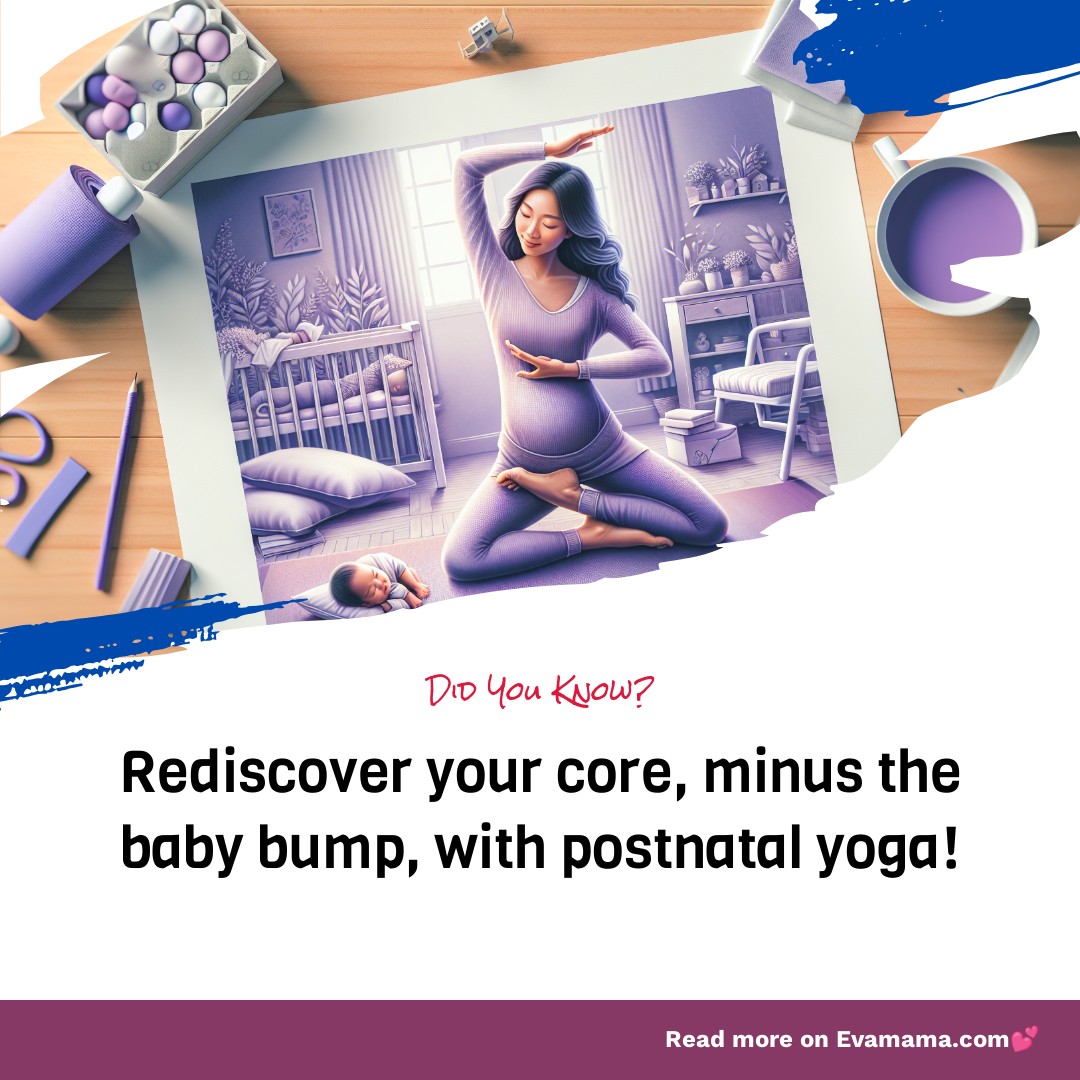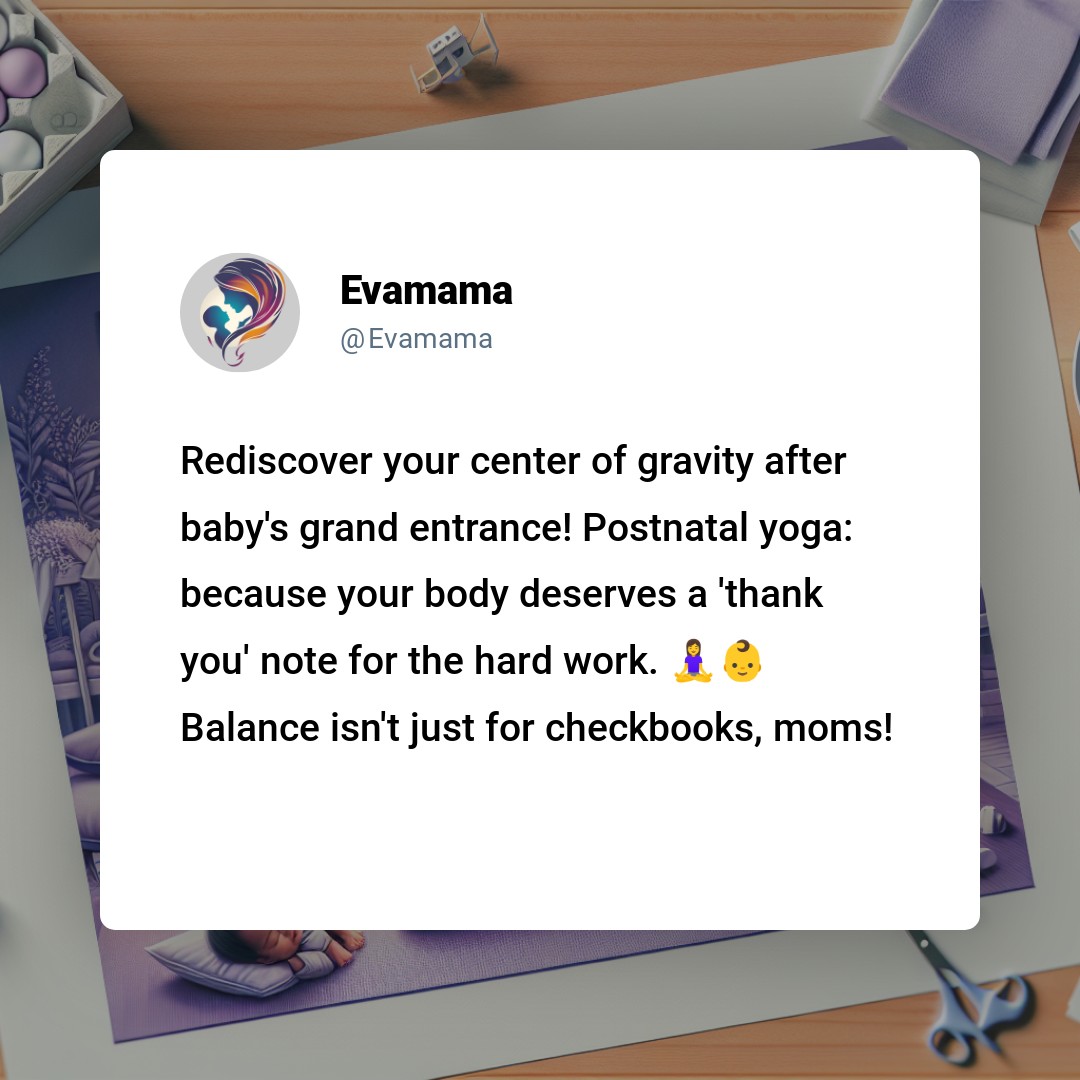Postnatal Yoga Secrets: Rebuild Strength & Balance After Birth
Embracing Postnatal Yoga: A Journey to Rebalance and Strengthen
Postnatal yoga is your path to regaining strength and balance after childbirth. Imagine stepping onto a yoga mat, your body a map of the journey it’s just undertaken, and feeling a mix of anticipation and tenderness as you begin to move again.
That first stretch is a quiet hello to your muscles, a gentle nudge to your core, and a promise of renewal. As a fellow mom and yoga enthusiast, I’ve felt the tremors of starting anew, the delicate dance of healing and strengthening.
Let’s navigate these waters together, exploring postnatal yoga as a beacon to guide you back to your center, one breath at a time.

The Gentle Start: Low-Intensity Stretches for New Mothers
You’ve just embarked on the most transformative journey of your life—motherhood. Your body has undergone incredible changes, and it’s time to gently guide it back to strength and balance. Postnatal yoga is your ally in this journey, starting with low-intensity stretches. These stretches are not just movements; they’re the first whispers of communication between you and your body after birth.
Pelvic Tilts and Cat-Cow: Begin on all fours, aligning your wrists under shoulders and knees under hips. Inhale deeply, allowing your belly to drop towards the mat, and gaze forward for the cow pose. Exhale, rounding your spine towards the ceiling and tucking your chin to your chest for the cat pose. This simple flow eases back tension and reawakens core awareness.
Breath as Your Anchor: Core Engagement Through Breathing Exercises
Breathing isn’t just a necessity of life; it’s a powerful tool for healing and strengthening post-birth. Diaphragmatic breathing, or deep belly breathing, is a cornerstone of postnatal yoga. It helps to re-engage and strengthen your core muscles, which have been stretched and stressed during pregnancy.
Diaphragmatic Breathing: Sit comfortably with one hand on your belly. Inhale slowly through your nose, feeling your belly rise into your hand. Exhale through pursed lips, engaging your abdominal muscles as your belly falls. This practice not only aids in core engagement but also promotes relaxation and stress relief.
Integrating Yoga into Your Postpartum Self-Care Routine
Self-care after giving birth is not a luxury; it’s a necessity. Yoga can be a nurturing part of your routine, but it’s needed to integrate it safely. Your body is still adjusting to the postpartum phase, with hormonal changes and physical recovery at the forefront.
Listen to Your Body: Start with just a few minutes a day, choosing poses that feel good and stopping anything that doesn’t. It’s not about pushing yourself; it’s about nurturing yourself.
Consult Healthcare Professionals: Before starting any postnatal exercise, including yoga, talk to your healthcare provider. They can give you personalized advice based on your delivery and recovery.
Safe Yoga Poses for Postpartum Recovery
Yoga poses for new mothers should focus on safety and rebuilding strength without overexertion. Here are some poses tailored for postnatal recovery:
Table of Supported Poses for Postpartum Recovery:
| Pose | Benefits | Tips |
|---|---|---|
| Child’s Pose | Releases tension in the back and shoulders | Keep knees wide to accommodate your postpartum body |
| Bridge Pose | Strengthens the pelvic floor and lower back | Engage your core and glutes to protect your back |
| Legs-Up-The-Wall | Relieves tired legs and feet | Use a cushion for extra comfort under your hips |
The Importance of Patience and Persistence in Postnatal Yoga
Rebuilding strength and balance after birth is a gradual process. It’s not about how quickly you can return to your pre-pregnancy form; it’s about honoring the incredible work your body has done and giving it the care it deserves.
Patience: Your body may not move as it did before, and that’s okay. Celebrate the small victories and be patient with your progress.
Persistence: Consistency is key in postnatal yoga. Even on days when it feels challenging, a few minutes of gentle stretching can make a difference.
The Role of Community in Postnatal Yoga Practice
You’re not alone on this journey. Joining a postnatal yoga class can provide support and camaraderie as you navigate motherhood. Sharing experiences and tips with other new mothers can be incredibly validating and empowering.
Find Your Tribe: Look for local postnatal yoga classes or online communities where you can connect with other new moms.
Final Thoughts on Postnatal Yoga
Postnatal yoga is more than just exercise; it’s a celebration of your body’s capabilities and a path to wellness. As you embrace these practices, Consequently that every breath and movement is a step towards a stronger, more balanced you.
Postnatal Yoga: Rebuilding Strength and Balance After Birth

Gentle Beginnings: The Power of Breath and Movement
You’ve just embarked on the incredible journey of motherhood, and your body has undergone significant changes. Postnatal yoga can be a nurturing way to ease back into exercise, focusing on rebuilding strength and balance. Let’s start with the breath, the core of yoga practice. Diaphragmatic breathing, or deep belly breathing, is not only calming but also helps to engage and strengthen your core muscles, which are of the essence for postpartum recovery.
Core Awakening: Reconnecting with Your Center
Your core is the foundation of your strength, especially after childbirth. Pelvic tilts are a subtle yet effective pose to begin reactivating your core muscles. Lying on your back with knees bent, gently rock your pelvis towards your ribs, exhaling as you lift and inhaling as you release. This movement nurtures the spine while engaging the pelvic floor and abdominal muscles.
Pelvic Floor Fortitude: The Key to Postpartum Recovery
The pelvic floor muscles have been under a lot of pressure during pregnancy and birth. Kegel exercises, integrated into yoga poses like Bridge pose, can help tighten and tone these muscles. While in Bridge, focus on lifting through the pelvic floor as you raise your hips, creating a sense of lift and support from within.
Back to Balance: Strengthening and Soothing Postures
Many new moms experience back pain, a result of carrying your precious bundle and breastfeeding. Child’s pose offers a gentle stretch for the back, while Cat-Cow stretches bring fluidity and strength to the spine. In Cat-Cow, synchronize your breath with the movement, arching your back as you inhale and rounding it as you exhale, massaging the spine and releasing tension.
Stress Relief: Yoga for a Calmer You
Motherhood comes with its set of stresses and strains. Legs-Up-The-Wall pose is a restorative posture that allows you to relax and let gravity do the work. This pose can alleviate back pain and bring a sense of calm to your busy mind, giving you a moment of peace in your new routine.
Building Strength Gradually: Safe Progression Post-Birth
Table: Postnatal Yoga Sequence for Recovery
| Pose | Benefits | Tips |
|---|---|---|
| Diaphragmatic Breathing | Engages core, reduces stress | Sit comfortably, hand on belly, feel the breath |
| Pelvic Tilts | Strengthens core and pelvic floor | Keep movements gentle and controlled |
| Kegel with Bridge Pose | Tones pelvic floor, strengthens glutes | Engage pelvic floor as you lift hips |
| Child’s Pose | Stretches back, relieves tension | Use a cushion for support if needed |
| Cat-Cow Stretches | Increases spinal flexibility, strengthens back | Move with the breath for a meditative flow |
| Legs-Up-The-Wall | Alleviates back pain, calms the mind | Support your lower back with a folded blanket |
| Modified Plank | Builds core and upper body strength | Keep your shoulders away from your ears |







